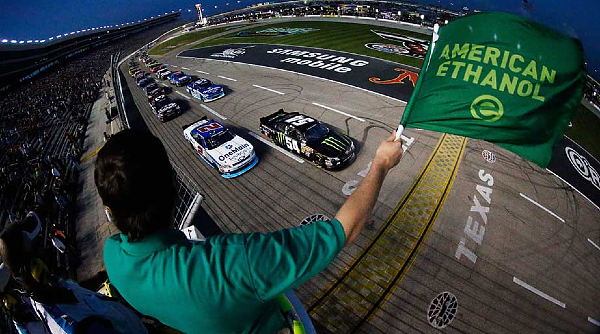A sport like NASCAR might not seem like the most obvious arena for environmental consciousness. However, as the world attempts to shift towards sustainability, NASCAR has recognized the importance of adopting green initiatives to ensure the sport’s future and reduce its environmental footprint.
A Shift Towards Sustainability
One of the most notable efforts is the introduction of NASCAR Green, a program launched in 2008 with the goal of reducing the sport’s environmental impact. This initiative encompasses a wide range of activities, from improving fuel efficiency to recycling efforts and the promotion of renewable energy sources.
Renewable Fuels and Carbon Emissions
One of the most critical areas where progress has been made is in the use of renewable fuels. Since 2011, NASCAR has used a biofuel known as Sunoco Green E15, a blend of 15% ethanol and 85% gasoline. This ethanol is produced from American-grown corn, a renewable resource, which helps reduce carbon emissions and supports the domestic agricultural industry. The switch to E15 fuel has not only demonstrated NASCAR’s commitment to sustainability but also shown that high performance and environmental responsibility can coexist.
NASCAR has also partnered with the EPA to promote environmental awareness and to encourage teams, tracks, and fans to adopt greener practices. Through this partnership, NASCAR has educated millions of fans on the benefits of renewable energy and the importance of reducing their carbon footprint.
Recycling and Waste Management
Recycling is another crucial component of NASCAR’s green initiatives. The NASCAR Green Clean Air Program is the largest tree-planting program in sports, with trees planted to offset carbon emissions from races. Additionally, NASCAR has made efforts to recycle used tires, motor oil, and car parts. The recycling programs extend beyond just the teams and tracks, with fans being encouraged to participate in recycling efforts at races through convenient drop-off points for bottles, cans, and other recyclables.
Some tracks have gone a step further, implementing zero-waste policies to minimize landfill contributions. The collaboration between NASCAR, tracks, and fans has led to the recycling of over 20 million bottles and cans since the program’s inception.
Renewable Energy at the Tracks
NASCAR has also explored the use of renewable energy at its tracks. Daytona International Speedway, for example, is home to one of the largest solar installations in professional sports. The solar panels generate enough energy to power thousands of homes and significantly reduce the track’s carbon footprint. Other tracks have followed suit, incorporating solar energy and other green technologies into their operations, showing a growing commitment to sustainability.
The Potential for a Specialty Series
Looking to the future, NASCAR is exploring the potential of electric and hybrid technologies. While the roar of internal combustion engines is synonymous with the sport, the growing trend towards electrification in the automotive industry cannot be ignored. NASCAR has already begun discussions and research into how electric vehicles could be integrated into the sport, either through a dedicated electric series in addition to the existing series, or by introducing hybrid technology into existing races.
This potential shift towards electric and hybrid vehicles could dramatically change the landscape of NASCAR, making it even more sustainable while maintaining the high-speed excitement that fans love.
The Impact on Fans and the Community
NASCAR’s green initiatives are not just about reducing the sport’s environmental impact; they also aim to inspire the sport’s passionate fan base to adopt more sustainable practices in their own lives. Through partnerships with organizations like Coca-Cola and Anheuser-Busch, NASCAR promotes recycling and environmental awareness at events, encouraging fans to take action.
The sport’s commitment to green initiatives is also reflected in community engagement. NASCAR works with local communities to support environmental education programs and sustainability efforts, reinforcing the message that the sport plays a part in protecting the planet.

